Language Arts
The Montessori Language Arts curriculum is designed to enhance the students’ skills in reading, comprehension, writing, and speaking; and to provide connections with history, literature, science, math and geography.
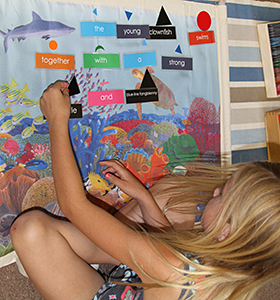
Reading
Students increase comprehension skills through various reading activities: reading silently and aloud to peers and teachers, reading cards, reading booklets related to academic studies, SRA, Junior Great Books (JGB), and home reading.
Writing
Creative writing allows the student to express thoughts before spelling and grammar are mastered. As the student’s skills progress, sentence structure becomes more complex, spelling improves, and story-writing skills develop. Students write book reports, poetry, and journals, and then learn to analyze sentences, build complex sentences, and refine search skills.
Grammar
Students study the parts of speech and their functions using classical Montessori materials such as Grammar Boxes and the Farm. Definitions and symbols are correlated with each part of speech. Grammar studies are integrated to reinforce work the child has already mastered. For example, to play the Detective Adjective Game, the child must be able to identify the scalene, isosceles, and equilateral triangles; and obtuse, acute, and right angle.
Spelling
Students study word families, create spelling lists, study word origins and meaning, and test their spelling skills. Nomenclature and sign words are practiced.
Handwriting
Print and cursive skills are reinforced through practice, journaling, and class work.
Mathematics
Elementary Montessori materials allow students to develop an in-depth understanding of math concepts followed by memorization of math facts. Students receive individual and small group lessons and work at their own pace. Math curriculum is organized so that students can independently follow the math sequence under the teacher’s guidance.
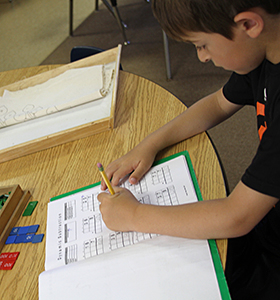
|
|
Geometry
Comprehensive geometry studies begin with experiences with the line and its parts and continue through the studies of angles, polygons, triangles, and quadrilaterals. The concepts of similarity, congruency, and equivalency are also studied.
Physical Science
Our curriculum integrates physics, chemistry, geology, astronomy and earth sciences. Studies include the use of lectures, discussion, and experiments. Projects and research help students to understand abstract concepts.

The Universe
Formation, nebulae, galaxies, gravity, laws of motion, Milky Way.
Solar System
The sun, the nine planets and their orbits.
The Sun
Composition, sunspots, corona, flares, prominences, solar storms, solar winds, aurora borealis, aurora australis, source of energy.
Planet Earth
Origin, inner structure, plate tectonics and effects, continental drift, volcanism, earthquakes (movement and consequence), tsunami, and tides.
Biological Science
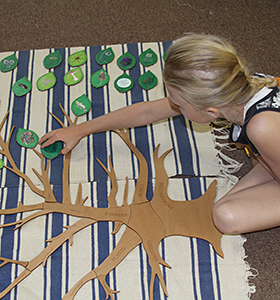
Botany
Many hand-on activities and experiments pique the students’ curiosity and engage them in the study of botany. Students study botany nomenclature and definitions, plant classification, biomes and ecosystems. Older students research native plants and help care for them in the environment.
Zoology
Children have a natural curiosity about the earth’s creatures. Zoology studies allow children to understand the system of organizing the animal kingdom, research the five classes of vertebrates, and study each in depth. Students begin their studies by observing real creatures, then use cards, booklets, control charts, and book research to continue their studies.
- Cells
- The Five Kingdoms
- Five Classes of Vertebrates
- Invertebrates
- Nomenclature of the external and internal parts of the vertebrate and invertebrate
- Study of the human body
- Animal Research – Independent, in-depth studies
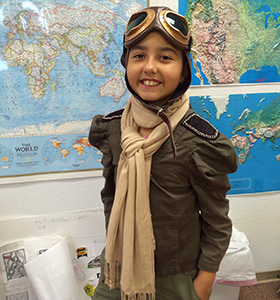
Geography
Geography studies are integrated with history and science. Students learn about many different cultures as they learn about other countries. Students also study the evolution of geography since the formation of the earth. Favorite activities include drawing maps and identifying countries, oceans, flora and fauna native to each continent.
- The earthquakes
- Timeline of life on Earth
- Major land and water forms around the world, oceans, seas, lakes, rivers, volcanoes, mountains, and islands.
- Physical, cultural, economic, an political geography
- Flag studies
- Geology
- Biomes
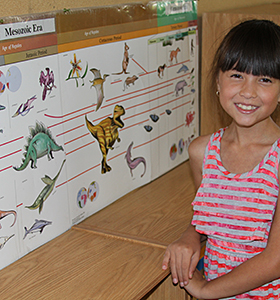
History
History begins with the concept of the passage of time, then geologic time, and the study of civilizations throughout history.
